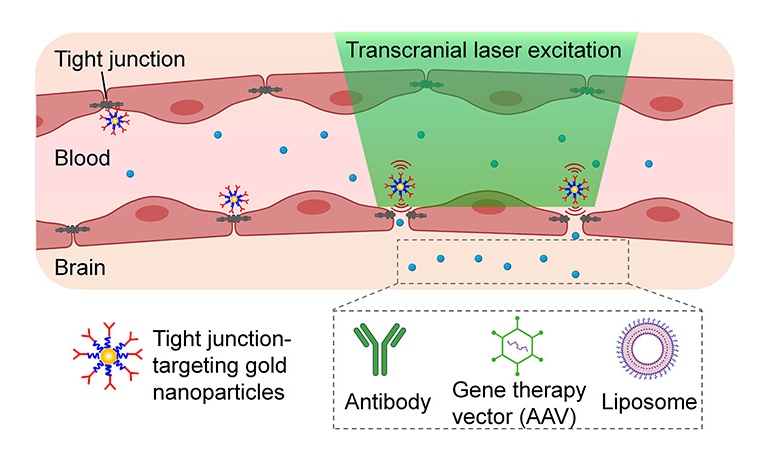Delivering drugs to the brain remains challenging because of the blood-brain barrier, a specialized layer of endothelium that is highly selective in what it lets through into the nervous tissue beyond. At the University of Texas at Dallas, researchers have developed a technique that enables therapeutics to cross the blood-brain barrier, potentially opening up new treatments for brain tumors and other brain disorders.
The method involves delivering gold nanoparticles into the bloodstream and then activating them with transcranial laser lighting to create temporary openings in the tight junctions between endothelial cells that line the cerebral blood vessels. Once the nanoparticles are close to the tight junctions, the researchers use a very rapid burst of laser light that can non-invasively penetrate the skull to “activate” them, causing a small mechanical force to act on the tight junctions. This means that the barrier becomes permeable for a while, allowing researchers to inject different types of therapeutics into the brain.
So far, the team at UT Dallas has tested the system for its ability to deliver a variety of therapeutics, including antibodies, gene therapies, and liposomes, suggesting the technique is very versatile.
“Approaches to increasing the blood-brain barrier [BBB] Permeability is essential to advance therapeutics for diseases of the central nervous system, ”said Xiaoqing Li, a researcher involved in the study, in a press release. “The action creates a tiny mechanical force that temporarily breaks the barrier to allow a drug to get into the blood flow to the brain.”
So far, the team at UT Dallas has shown that the technique does not appear to be harmful and allows them to deliver a wide variety of therapeutics. More studies will be needed, but the new technology could prove very important in making new therapies for brain diseases available.
“We have shown that BBB permeability can be modulated without significantly disrupting spontaneous vasomotion or the structure of the neurovascular unit,” said Dr. Qi Cai, another researcher involved in the study.
Study in Nano Letters: Reversibly modulating the blood-brain barrier through laser stimulation of molecular nanoparticles
Via: University of Texas at Dallas
